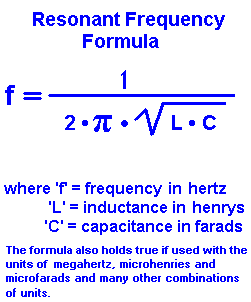Originally posted by John Kolbeck
View Post
The key factor in pickups winding is always Inductance - DC Resistance and stray ( or parasitic ) Capacitance are inevitable "side effects" caused by the wire's Resistivity not being zero.
The basic equations are F0 ( resonant peak ) = 1/(2pi*(Sqrroot(L/C)))
( where F0 is the resonant Frequency in Hertz, L is the pickup's Inductance in Henries and C is the pickup's stray Capacitance in Farads ).
As you can see, DC Resistance does not appear in the above equation ( =it does not affect the resonant peak ).
DC resistance has some relation with the Q factor instead ( or Quality factor )
Q=(1/R)*(Sqrroot(L/C))
The bigger the Q factor, the narrower the pickup's bandwidth ( more "focused" around Fo ).
This comes from this ( approximated ) equation:
BW=F0/Q
Where F0 and Q have the same meaning as before and BW is the bandwidth in Hertz.
An increased DCR makes the divider ( 1/R ) bigger in the Q equation, resulting in a lower Q, this, together with the higher Inductance ( which grows with the number of turns SQUARED ), will most likely result in a hot pickup, at the cost of a very low resonant Frequency and a large bandwidth, so ( all other factors being equal ) it will probably sound loud, but bassy and muddy ( low definition ) with a reduced "attack".
Hope this will clarify things for you.




Comment